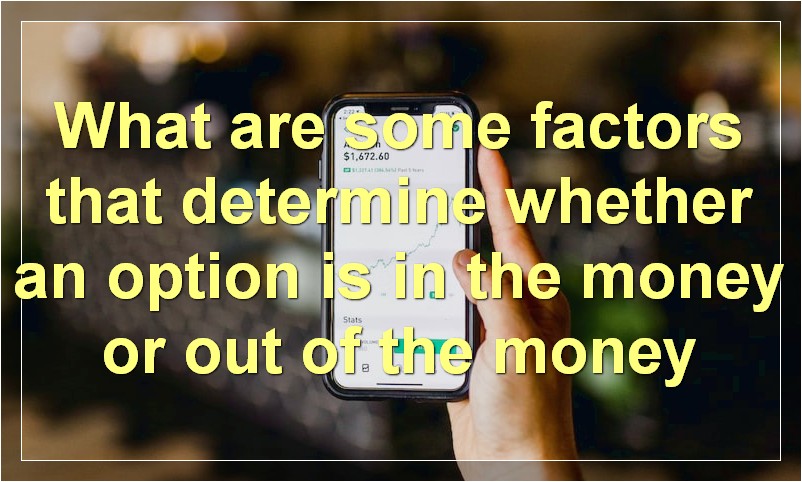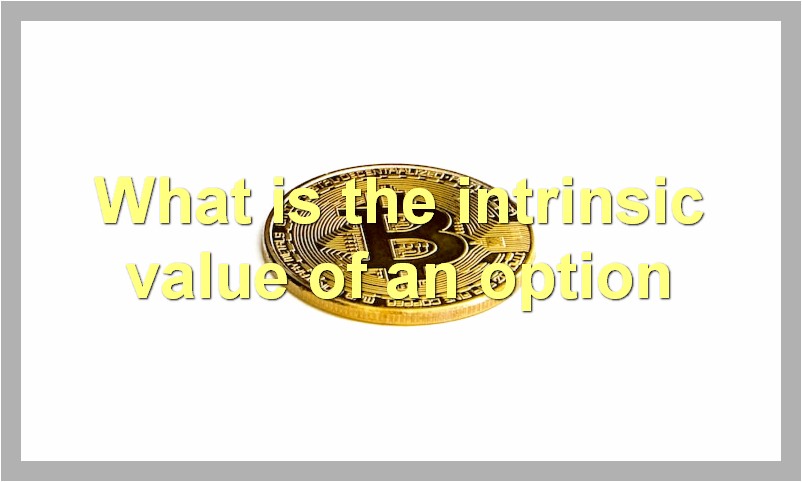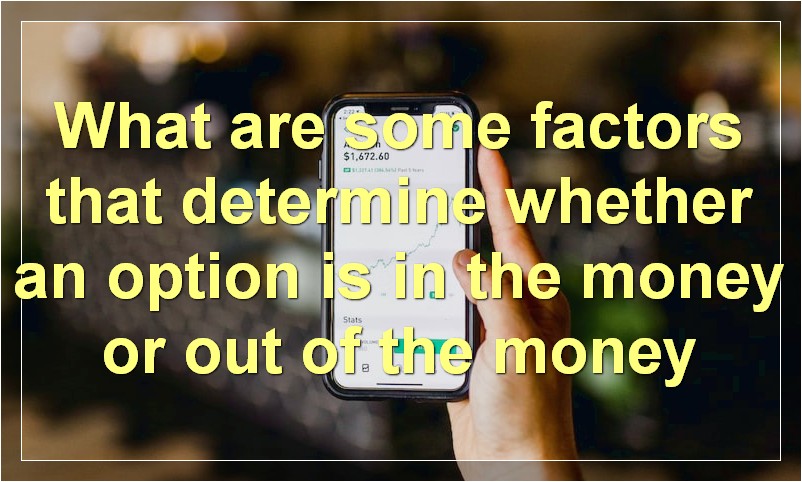In the world of options trading, there are two types of options contracts – in the money options and out of the money options. So, which one is better?
What is the difference between in the money and out of the money options
An option is a contract that gives the holder the right, but not the obligation, to buy or sell an underlying asset at a specified price within a certain period of time.
There are two types of options: call options and put options. A call option gives the holder the right to buy the underlying asset, while a put option gives the holder the right to sell the underlying asset.
The price at which the underlying asset can be bought or sold is called the strike price. The period of time during which the option can be exercised is called the expiration date.
Options can be classified as either in the money or out of the money. An in the money option is one where the current market price of the underlying asset is higher than the strike price for a call option, or lower than the strike price for a put option.
An out of the money option is one where the current market price of the underlying asset is lower than the strike price for a call option, or higher than the strike price for a put option.
What are some factors that determine whether an option is in the money or out of the money

The moneyness of an option is determined by its strike price in relation to the underlying asset’s spot price. If the strike price is below the spot price, then the option is in the money. If the strike price is above the spot price, then the option is out of the money. The amount by which an option is in or out of the money is referred to as its intrinsic value.
How does the strike price affect whether an option is in the money or out of the money
The strike price is the price at which an option buyer can buy (in the case of a call) or sell (in the case of a put) the underlying asset. The strike price of an option has a direct effect on whether the option is in the money or out of the money.
For a call option, if the strike price is lower than the current market price of the underlying asset, then the option is in the money. This is because the option buyer would be able to buy the underlying asset at a price below the current market price. On the other hand, if the strike price is higher than the current market price of the underlying asset, then the option is out of the money. This is because the option buyer would not be able to buy the underlying asset at a price below the current market price.
For a put option, if the strike price is higher than the current market price of the underlying asset, then the option is in the money. This is because the option buyer would be able to sell the underlying asset at a price above the current market price. On the other hand, if the strike price is lower than the current market price of the underlying asset, then the option is out of the money. This is because the option buyer would not be able to sell the underlying asset at a price above the current market price.
If an option is out of the money at expiration, what happens to it
If an option is out of the money at expiration, it expires worthless.
Can an option move from out of the money to in the money during its lifetime
An option can move from out of the money to in the money during its lifetime for a number of reasons. The most common reason is that the underlying security price has moved in favor of the option holder, making the option more valuable. Another common reason is that time has passed and the option is now closer to expiration, making it more likely that it will expire in the money. Finally, changes in implied volatility can also cause an out-of-the-money option to become in the money.
What is the intrinsic value of an option

When it comes to options, the intrinsic value is the amount by which the option is in-the-money. In other words, it is the difference between the strike price and the underlying asset’s spot price. For example, if a stock is trading at $50 and a call option with a strike price of $45 is purchased, then the intrinsic value of the option is $5.
However, it should be noted that an option’s intrinsic value is not always equal to its market price. This is because an option’s market price also takes into account factors such as time premium and volatility.
How does the intrinsic value affect whether an option is in the money or out of the money
When it comes to options, the intrinsic value is the difference between the strike price and the underlying asset price. If the underlying asset price is below the strike price, then the option is out of the money and has no intrinsic value. If the underlying asset price is above the strike price, then the option is in the money and has intrinsic value.
What is time value
Time value is the amount of money that a person is willing to pay for the use of money over a period of time. Time value is often expressed as a percentage, which represents the annual interest rate that a person is willing to pay for the use of money.
How does time value affect whether an option is in the money or out of the money
The time value of an option is the amount by which the price of the option exceeds its intrinsic value. Intrinsic value is the in-the-money amount of an option, or the value of an option if it were to expire immediately with the underlying asset at its current price. All else being equal, options with longer times to expiration will have higher time values than shorter-dated options.
Out-of-the-money options have no intrinsic value, but only time value. The time value of an out-of-the-money option diminishes as expiration approaches, and it expires worthless if the underlying asset never trades at or above the option’s strike price during its lifetime.
Is there a difference between being in the money and having intrinsic value
There are a few key differences between “being in the money” and “having intrinsic value.” When something is in the money, it means that it has monetary value – in other words, it can be exchanged for goods or services. However, intrinsic value goes beyond this; it refers to the inherent worth of an object or entity. So, while something that is in the money may only be valuable because it can be traded for cash, something with intrinsic value has value regardless of its exchangeability.

